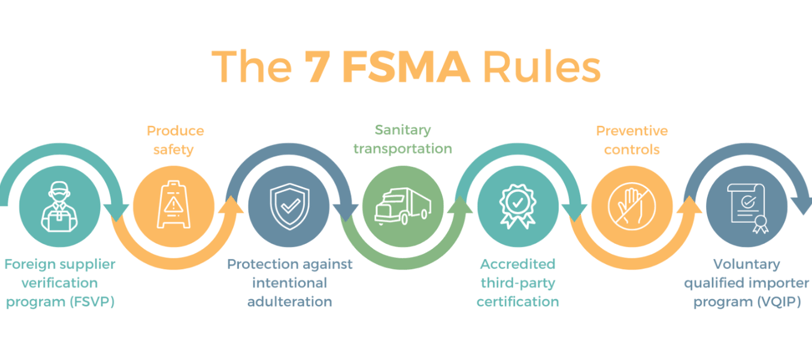New Food Traceability Rule Set to Transform U.S. Food Industry
The U.S. food industry is on the brink of a significant transformation as the FDA's Food Traceability Rule, mandated by the Food Safety Modernization Act (FSMA), approaches its implementation date of January 20, 2026. This new regulation aims to enhance food safety and traceability across the United States, with far-reaching implications for businesses throughout the food supply chain.
Felipe Saint-Martin
7/28/20242 min read


The U.S. food industry is on the brink of a significant transformation as the FDA's Food Traceability Rule, mandated by the Food Safety Modernization Act (FSMA), approaches its implementation date of January 20, 2026. This new regulation aims to enhance food safety and traceability across the United States, with far-reaching implications for businesses throughout the food supply chain.
The Traceability Rule: A Game-Changer for Food Safety
The FDA's Food Traceability Rule is designed to create a standardized approach to tracking and tracing food products as they move through the supply chain. The rule requires businesses that manufacture, process, pack, or hold foods on the Food Traceability List to maintain and share specific data elements at critical tracking events. Key components of the rule include:
Critical Tracking Events (CTEs): Points in the supply chain where record-keeping is required.
Key Data Elements (KDEs): Specific pieces of information that must be recorded at each CTE.
Traceability Lot Codes (TLCs): Unique identifiers assigned to food products.
Impact on Food Businesses
The implementation of this rule will have significant implications for food businesses across the United States:
Enhanced Food Safety: The rule will enable faster identification and isolation of contaminated food products, potentially reducing the scope and impact of foodborne illness outbreaks.
Operational Changes: Businesses will need to adapt their processes to collect, maintain, and share the required traceability information.
Technology Investment: Many companies may need to invest in new software or systems to manage the increased data requirements.
Supply Chain Transparency: The rule will foster greater transparency throughout the food supply chain, potentially improving consumer trust.
Market Access: While compliance may be challenging for some, particularly smaller businesses, it may also open up new market opportunities, especially with large retailers and food service providers.
Challenges and Concerns
Despite the potential benefits, the food industry has raised concerns about the rule's implementation:
Compliance Costs: The Food Industry Association argues that the traceability requirements are complex and burdensome, especially for smaller businesses.
Implementation Timeline: Some industry groups are pushing for delays, citing the need for more time to prepare and implement necessary changes.
Technological Readiness: Questions remain about whether current technology can fully support the rule's requirements across the entire supply chain.
Legislative Developments
In response to industry concerns, the Food Traceability Enhancement Act has been proposed. This bill aims to:
Exempt certain businesses (restaurants, retail food establishments, and warehouses) from some requirements.
Delay implementation until two years after the completion of pilot projects.
However, food safety advocates, including the Safe Food Coalition, oppose these delays, arguing that the industry has had ample time to prepare since FSMA was passed in 2010.
The Road Ahead
As the 2026 implementation date approaches, food businesses across the United States must prepare for significant changes in their traceability practices. While challenges exist, the potential benefits in terms of improved food safety, reduced foodborne illnesses, and enhanced consumer trust are substantial.
The CDC estimates that 48 million people get sick, 128,000 are hospitalized, and 3,000 die from foodborne diseases each year in the United States. The Food Traceability Rule represents a critical step in addressing this public health concern and modernizing the U.S. food safety system. As the debate continues and businesses prepare for compliance, one thing is clear: the landscape of food safety and traceability in the United States is set for a major overhaul, with implications that will resonate throughout the food industry for years to come.
